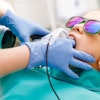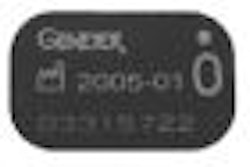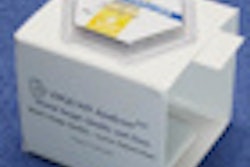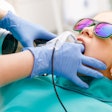
The advent of digital intraoral radiography has created new infection-control challenges for dental offices that previously were not an issue with film-based imaging. Because photostimulable phosphor (PSP) and solid-state sensors cannot be autoclaved, barrier envelopes are used to prevent cross-contamination between uses.
But studies have shown that, despite the use of barriers, bacterial contamination of the sensors used in digital radiography continues to occur (Journal of Dental Hygiene, Summer 2005, Vol. 79:3, p. 8; Oral Surgery, Oral Medicine, Oral Pathology, Oral Radiology, and Endodontology, March 2010, Vol. 109:3, pp. 457-462).
In the 2005 study, researchers reported that 61% of the PSP plates were contaminated with oral streptococci after being cultured for 24 hours. In the 2010 study, researchers found bacterial growth on 56% of the PSP plates, despite weekly gas sterilization and application of a 70% alcohol wipe between patients.
Now a new study analyzes the effectiveness of a barrier envelope system for PSP plates, and offers some practical tips to help ensure that dental practices keep patients safe from harmful bacteria during digital x-ray exams (Journal of the Canadian Dental Association, September 7, 2011).
“Bacterial contamination of the PSP plates can occur at a number of points in daily usage.”
"Bacterial contamination of the PSP plates can occur at a number of points in daily usage," wrote the study authors, from the University of British Columbia. "Contamination may originate during the manufacturing process, from ambient air and/or through the use of latex gloves by dispensary staff during cleaning, disinfecting, and packaging. However, the most likely source of contamination is contact between the PSP plate and the patient's oral environment."
Contamination of the PSP plate could occur if there are perforations in the barrier, contact between the barrier and the oral fluids during removal for processing, or if there is contact with contaminated gloves, the researchers noted.
Study methodology
For their study, the researchers used 52 PSP plates and barrier envelopes supplied by Air Techniques, plus a Rinn film holder from Dentsply. Twelve of the PSPs were inserted into the mouths of both of the study authors, while 28 were used in the mouths of patients recruited from the final-year dental clinic at the University of British Columbia.
To ensure asepsis of the PSP plates, an operator working in a class II safety cabinet and wearing barrier gloves wiped each PSP plate twice with a 70% ethanol wipe. Each sterilized PSP plate was handled with sterile forceps when they were placed into the barrier envelopes, which were then sealed using the same forceps. Each sealed barrier was then inspected for perforations caused by the forceps and for uneven sealing.
Each barrier envelope containing a PSP plate was first placed into a bite block, then in the mouth of the volunteer or patient, adjacent to the mandibular molars (to simulate a periapical radiograph). Each envelope was left in place for one minute, but no radiographs were taken. After removal, the envelopes were transferred back to the safety cabinet for processing.
To demonstrate contamination, 10 of the sealed envelopes were each placed in 3 mL of trypticase soy broth and removed after one minute. Each envelope was then cut above the detector with sterile scissors, and the PSP plates were removed with sterile forceps, and each placed in 3 mL of trypticase soy broth for one minute. In each case, 0.5 mL of the broth was plated on trypticase soy agar.
The agar plates were then incubated, along with a control plate, for two days at 35° C. At the end of the incubation period, the bacterial colonies were counted. The presence of bacteria colonies, not the size of the colonies, was used to determine bacterial contamination, with the researchers assuming that the presence of any growth indicated failure of the barrier envelope.
Study findings
Quality assurance of the PSP plates before clinical placement revealed defects in the integrity of four barrier envelopes resulting from forceps-related damage or failure to achieve a uniform seal, the study authors noted.
"These defects allowed substantial contamination," they wrote.
Contamination also occurred as a result of failure to extract the PSP plate from the barrier envelope cleanly, they added. Of the 44 barriers with no obvious defects, only three allowed bacterial contamination of the PSP plate.
"In this study, contamination of the PSP plates resulted from perforation of the plastic barrier envelopes, incorrect sealing of the edges of the barrier envelopes, and contact with the edge of the barrier envelopes during removal for processing," the researchers wrote.
As a result, they make the following recommendations:
- PSP plates be disinfected between removal from a contaminated barrier envelope and placement in a new barrier envelope.
- Placement into the barrier envelope should ideally be carried out under aseptic conditions.
- The integrity of each sealed barrier envelope should be verified visually before release to the clinic.
"Given the current findings and the results of previous studies, it is clear that infection-control challenges remain in the area of digital intraoral radiography," the study authors concluded.



















